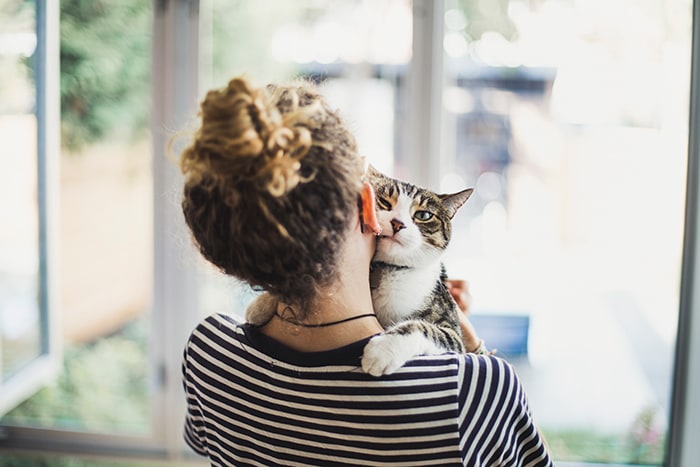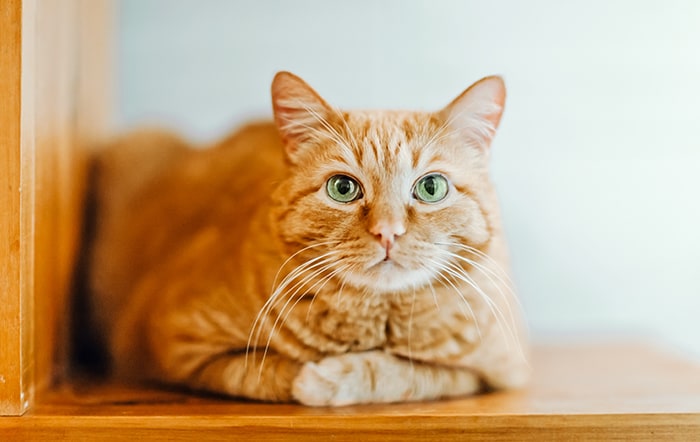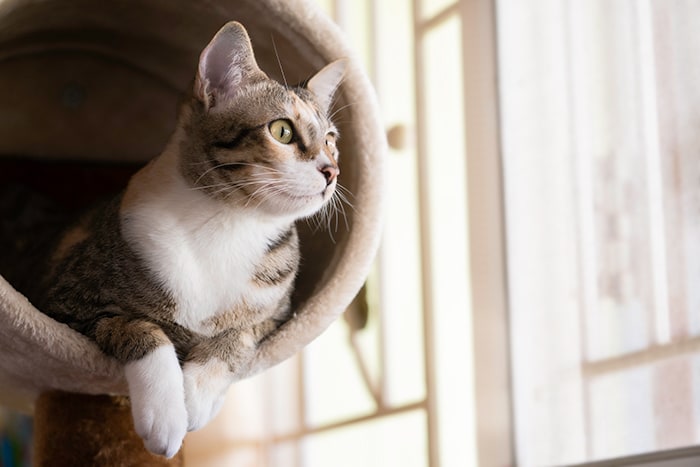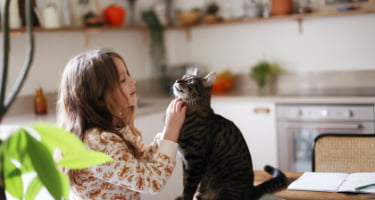Related articles
- Bringing home a new puppy
- The Cost of Owning a Pet in Australia
- How to find the right vet for your pet
- 10 easy ways to remove dog hair from your car
- Toxic foods and plants your dog should not eat
- Tick paralysis in dogs: symptoms, signs, and prevention
- Common dog diseases
- What dog breeds are best for me?
- 8 tips to keep your dog cool in summer
- How to Buy the Best Pet Insurance
- Travelling with pets
- What cat breeds are best for me?
- Bringing a new kitten home
- Things to Know Before Owning a Dog
- 6 dental care tips for cats and dogs
- Harmful foods and items your cat shouldn’t eat
- How to Socialise Your Dog
- How to Keep Your Dog Entertained While at Work
- Pet Costs Survey and Statistics 2023
- How to save on pet insurance
- The Ultimate Pet Vacation Destinations
- Most Popular Dog Names Around the World
- Big Dog Breeds: Health, Cost and Personality
- Small Dog Breeds: Health, Cost and Personality
- How much exercise does my dog need?
- Pet Vaccinations: What vaccines are there and what are the pros and cons?
- Australia’s Favourite Dog Breed
- Why does my dog have diarrhoea?
- Cats vs Dogs: What makes a better pet?
Disclaimer: This information is general in nature only. While Budget Direct has endeavoured to ensure the information we’ve relied on is accurate and current, we do not guarantee it. Budget Direct accepts no liability for this information.
When it comes to our cats, we all want to make sure that they’re safe and healthy. But keeping our cats healthy can also mean treating them for any common cat diseases.
That’s why it’s important for all pet owners to know how to recognise the signs and symptoms associated with these common cat diseases. This way you’ll be able to seek effective, timely and appropriate treatment from the right vet for your pet.
Here is a list of cat diseases commonly associated with cats.
Cancer
Cancer has no single known cause and can develop through known and unknown hereditary and environmental factors.
Lymphoma is one of the most common types of cancer in cats. Research has found that we can estimate that 30% of all reported cat cancers are due to lymphoma. [1]
Squamous cell carcinoma is a common type of skin cancer caused by repeated exposure to the sun on the ears, eyelids, or nose of the cat. White or light-coloured cats can be more susceptible to this type of cancer.
Symptoms of cancer are dependent on which organ/body system is affected and may include:
- Lumps
- Swelling
- Persistent sores or skin infections
- Abnormal discharge
- Weight loss
- Diarrhoea or vomiting
- Scaly and red skin patches
- Loss of appetite
- Difficulty breathing
Treatment options will vary and depend on the type and stage of cancer.
Diabetes Mellitus
Diabetes Mellitus is a complex disease caused either by a lack of the hormone insulin or a negative reaction to insulin. If your cat can’t produce insulin their blood sugar levels can elevate, leading to hyperglycaemia and a multitude of health problems for any cat.
Obesity and physical inactivity may also play a role in the development of diabetes in cats.
There are two types of diabetes in cats:
- Type I – lack of insulin production
- Type II – impaired insulin production alongside a negative response to the hormone
It’s important to note that cats with type II diabetes can also progress to type I diabetes.
Symptoms of diabetes in cats may include:
- Increased appetite
- Weight loss
- Excessive thirst
- Increased urination
Diabetes is considered by vets to be a manageable condition however treatment will vary based on your cat’s condition.
Feline hypertrophic cardiomyopathy (HCM)

Hypertrophic cardiomyopathy is one of the most common heart diseases in cats. This disease is characterised by an abnormal thickening of one or several areas of the walls of the heart.
The cause of this disease is unknown, and it has been suggested that there is a genetic defect in the muscle fibres of the hearts of cats who have this disease.
HCM is usually diagnosed in middle-aged cats with an average age of six years old [2]. However, there is also a juvenile form that can also affect younger cats.
The disease is most commonly diagnosed in Domestic Short Hairs, Domestic Long Hair Ragdolls, Persians, Devon Rex, and Maine Coon.
Symptoms of HCM may include:
- Difficulty breathing
- Laboured breathing
- Vomiting
- Decreased appetite
Many cats with HCM are asymptomatic and the disease can still be diagnosed through an ultrasound of the heart also (known as an echocardiogram) at your chosen vet.
Flu
Cat flu is a general term for a highly contagious respiratory condition caused by one or more viruses including feline herpesvirus, calicivirus and chlamydia. These viruses produce symptoms akin to the common cold in humans.
Cat flu is most commonly spread by direct contact of fluids (saliva, tears, and nasal discharge) between cats. It can also be spread indirectly through food bowls, bedding, litter trays or human hands.
Symptoms of the flu in cats may include:
- Sneezing
- Discharge from the eyes and nose
- Fever
- Conjunctivitis
- Breathing problems
- Coughing
- Fatigue
- Loss of appetite
Any cats who are sick with cat flu should be isolated from other cats until they are completely recovered. Recovery typically takes around 2 weeks. [3]
Vaccination can help to prevent disease and reduce the severity of symptoms in cats that are sick. Therefore kittens must be vaccinated from the age of 8 weeks against the viruses that cause cat flu. Booster vaccinations can be given based on your vet’s recommendation.
Feline Immunodeficiency Virus (FIV)
FIV is a blood-borne viral infection that may not show any symptoms until years after the initial infection has occurred. Once symptoms do develop though, they may steadily progress or show signs of sickness for the next few years.
Cats can become infected from deep bite wounds from other cats or be transmitted from a mother cat to her kittens via placenta or milk.
Over time the virus severely weakens the cat’s immune system once the disease gets hold. This means that your cat could also be susceptible to other secondary infections.
Symptoms of FIV can vary in cats and may include:
- Enlarged lymph nodes
- Fever
- Anaemia
- Weight loss
- Dishevelled coat
- Poor appetite
- Diarrhoea
- Conjunctivitis
- Gingivitis
- Stomatitis
- Dental disease
- Discharge from eyes or nose
The best way to prevent your cat from getting infected is to keep them indoors and actively avoid any contact with other infected cats. If your cat is demonstrating any of the symptoms listed above, have them examined by a veterinarian immediately.
Feline lower urinary tract disease (FLUTD)

Feline lower urinary tract disease is a term used to describe the conditions that can affect the urinary bladder and/or the lower urinary tract in cats.
While the exact cause is unknown, several diseases could contribute to FLUTD. Some of the more common causes may include bladder stones, bacterial infections, and urinary tract infections.
Causes can also vary based on the cats breed, age, gender, and types of cats affected by FLUTD can include:
- Middle-aged cats
- Neutered cats
- Over-weight cats
- Cats that exercise very little
- Cats with little or no access to an outside setting
- Cats that eat a dry diet
Stress
Symptoms of FLUTD in cats may include:
- Blood in the urine
- Excessive strain to urinate
- Abdominal pain
- Behavioural changes
- Restlessness
- Refusing to eat
Changes in the pattern of urination i.e. urinating outside the litter box, frequent urination etc.
FLUTD can be very uncomfortable for most cats and sometimes even dangerous. The cat’s bladder can become too full or blocked. If your cat displays any of the symptoms listed you must take them to be assessed at your chosen vet immediately.
Fight wounds
Cats obtain wounds (including abscesses) during fights in an attempt to protect or gain more territory. These wounds can become infected as bacteria can be introduced to the wound area through a cat’s bite or scratch.
Initially, there may be no sign of infection but gradual swelling and pain at the site of the wound could occur.
There are two types of infection in cats:
- When the area around the bite is covered by loose skin where a pocket of pus can develop to form an abscess.
- When the skin is tighter and the infection spreads through the tissue to cause cellulitis.
Symptoms of infection from a fight wound, or may include:
- Decrease in appetite
- Fever
- Lethargy
- Lameness
- Crying or growling when being touched in certain places
- May be reluctant to move
It’s important to note that all cats are different, and some cats may display more obvious signs of infection than others.
Conjunctivitis
Conjunctivitis is the inflammation of the conjunctiva (the outer membrane of the eyeball and inner eyelids). This condition is very uncomfortable and cats with conjunctivitis will have red, swollen eyes that can be sealed partially closed or completely shut due to discharge matter.
The most common cause of conjunctivitis in cats is due to cat flu. Conjunctivitis is a symptom of cats who have feline herpes virus, feline calicivirus, chlamydia and feline immunodeficiency virus.
Conjunctivitis can also occur when cats react to allergens including plant pollens, fleas, and food.
Symptoms of conjunctivitis may include:
- Red, swollen, irritated and painful eye/s
- Partially closed or completely closed eye/s
- The third inner eyelid may become inflamed or swollen
- White, green, or clear discharge from the eye/s
- Changes to the surface of the eye due to inflammation or ulceration
- Sneezing, lethargy, and lack of appetite (if affected by cat flu)
It’s important to note that ulceration can be a dangerous secondary complication associated with conjunctivitis.
You must seek veterinary assistance if you notice your cat’s eye/s looks to be affected.
Here are some less common diseases also associated with cats

Feline Leukemia Virus (FeLV)
FeLV is a transmittable virus that attacks a cat’s immune system so that they are more susceptible to infections and diseases. These may include anaemia, kidney disease and lymphoma.
Cats can become infected from mutual grooming, mating, sharing food, water, a litter box or through bites and scratches from other infected cats. The virus can also be shed through saliva, nasal secretions, urine, faeces, and blood.
Symptoms of FeLV can vary in cats and may include:
- Loss of appetite and weight loss
- Pale or inflamed gums
- Poor coat condition
- Abscesses
- Fever
- Diarrhoea and vomiting
- Seizures
- Enlarged lymph nodes
- Jaundice
- Respiratory distress
There is a vaccine available for cats at risk of being infected by FelV. Make sure to understand the risks involved and consult your chosen veterinarian to evaluate what is best for your cat.
Feline Infectious Enteritis (FIE)
FIE is a highly contagious disease caused by an infection from the feline parvovirus (FPV). It is also known as the feline panleukopenia virus due to the development of low white blood cell counts in infected cats.
Cats can become infected from direct faecal and oral contact and indirectly infected from contaminated objects; food bowls, bedding, floors and contact by hand.
Symptoms of FIE can vary in cats and may include:
- High temperature
- Loss of appetite
- Depression
- Vomiting and diarrhoea
- Fever
Gastroenteritis
While there is no specific treatment for FIE, there are much better preventative measures that have been put in place.
There are highly effective vaccines available and alongside good management practices, regular disinfecting, and isolation procedures; these should all help to control the spread of the virus.
If you suspect your cat has any of these common cat diseases, then you should have them tested and examined by your chosen veterinarian right away. During your visit, you’ll want to prepare a detailed description of any signs or symptoms associated with your cat’s condition.
Pet Insurance Solved™ with Budget Direct
An unwanted illness or injury can affect your pet at any time and the last thing you need is an expensive vet bill you can't afford. Protect your pet with Budget Direct's Pet Insurance and receive 15%^ off your first year's premium when you purchase a policy online.
FAQs
How long does a calicivirus infection last?
Once a cat is exposed to the disease it may go through an incubation period of 2-6 days then start developing clinical signs which can last for 14-21 days.
Can calicivirus in cats be cured?
No. There is no cure for calicivirus and if your cat becomes infected you should take them to a veterinarian immediately so that they can be treated for their symptoms.
Can feline herpesvirus cause blindness?
Feline herpesvirus is a highly contagious virus that can lead to conjunctivitis. Conjunctivitis can cause herpetic ulcers (corneal ulcers). This can be dangerous if left untreated and may permanently damage their eyes.
Is there a vaccine for feline herpes?
Yes! Vaccination for herpesvirus is administered through three injections from when your cat is 8 weeks old. Vaccinations are given at 6-8 weeks, 10-12 weeks, and 14-16 weeks of age. Cats should then receive booster shots annually by their chosen veterinarian.
Sources
[1] ASPCA, 2010, Common Cat Diseases
[2] The Cat Clinic, 2007, Cat Health
[3] RSPCA, 2019, What is Cat Flu and How is it Managed?
[4] Adelaide Vet, 2010, Cat Vaccinations - Common Diseases and Names Explained
[5] RSPCA, 2019, What are Feline Immunodeficiency Virus...
[6] VCA, 2011, Feline Calicivirus Infection
[7] AVMA, 2021, Feline Lower Urinary Tract Disease
[8] Vetwest Animal Hospitals, 2008, Fighting - Wounds and Infections
[9] Vetwest Animal Hospitals, 2014, Conjunctivitis in Cats
Related articles
- Bringing home a new puppy
- The Cost of Owning a Pet in Australia
- How to find the right vet for your pet
- 10 easy ways to remove dog hair from your car
- Toxic foods and plants your dog should not eat
- Tick paralysis in dogs: symptoms, signs, and prevention
- Common dog diseases
- What dog breeds are best for me?
- 8 tips to keep your dog cool in summer
- How to Buy the Best Pet Insurance
- Travelling with pets
- What cat breeds are best for me?
- Bringing a new kitten home
- Things to Know Before Owning a Dog
- 6 dental care tips for cats and dogs
- Harmful foods and items your cat shouldn’t eat
- How to Socialise Your Dog
- How to Keep Your Dog Entertained While at Work
- Pet Costs Survey and Statistics 2023
- How to save on pet insurance
- The Ultimate Pet Vacation Destinations
- Most Popular Dog Names Around the World
- Big Dog Breeds: Health, Cost and Personality
- Small Dog Breeds: Health, Cost and Personality
- How much exercise does my dog need?
- Pet Vaccinations: What vaccines are there and what are the pros and cons?
- Australia’s Favourite Dog Breed
- Why does my dog have diarrhoea?
- Cats vs Dogs: What makes a better pet?



